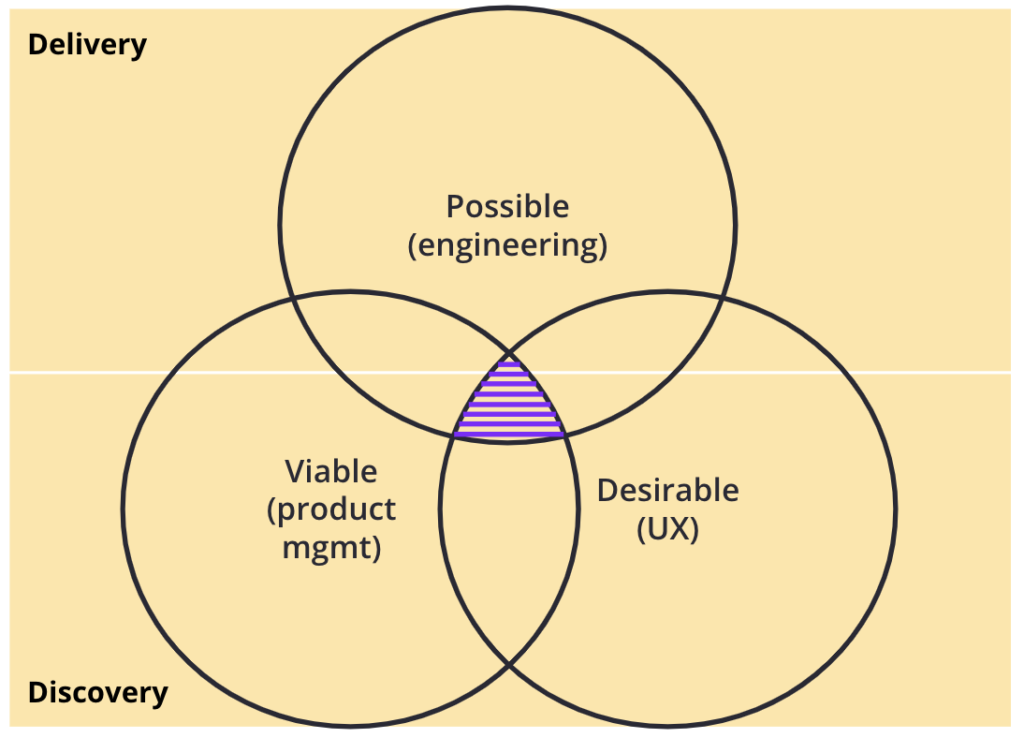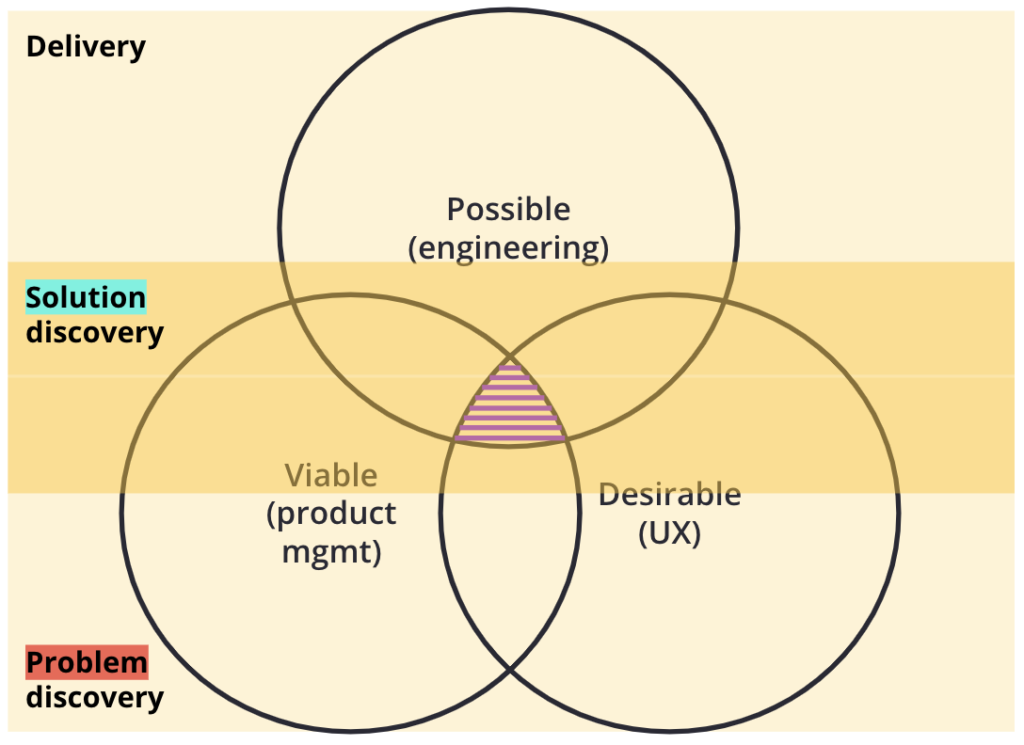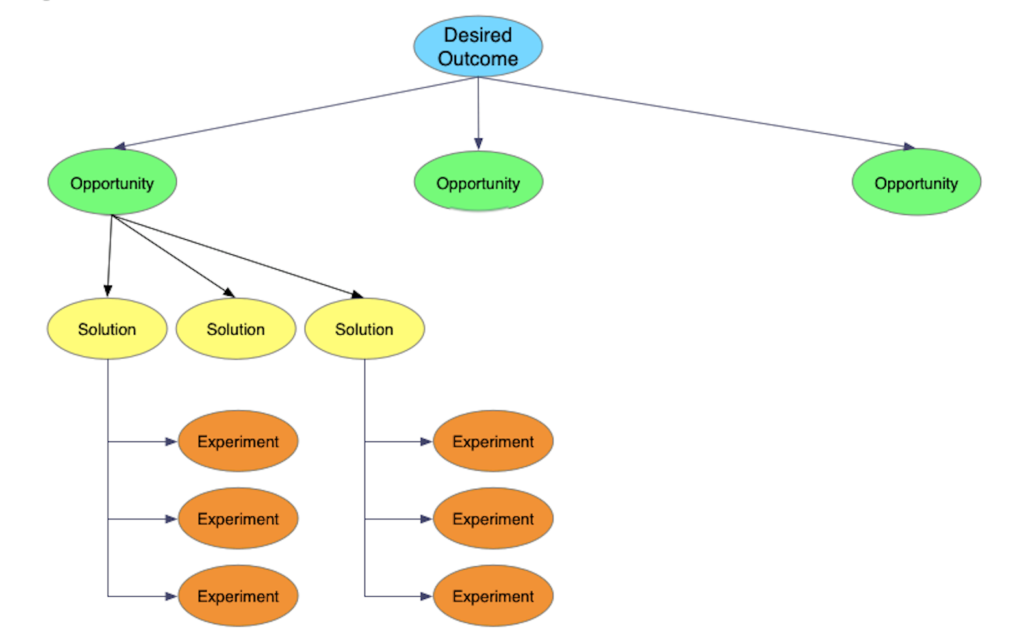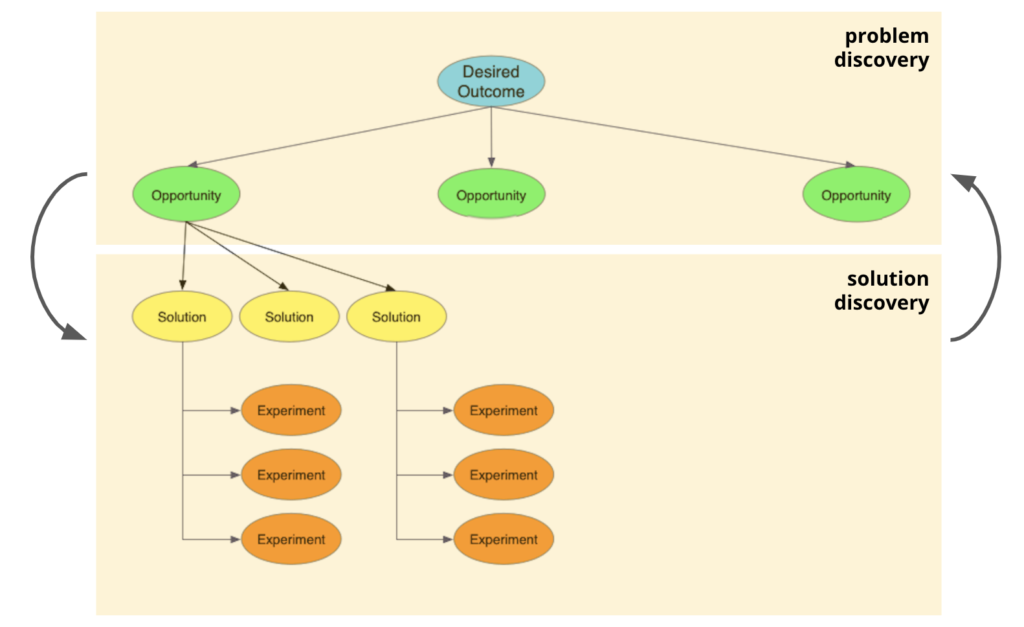Innovation: How to get a return on the investment from building a digital product?
26 de January, 2022Innovation: next steps
8 de February, 2022By the end of 2021, I had the opportunity to re-record the classes I gave at Cursos PM3 on the fundamentals of product management. It was a good opportunity to review and expand the content based on the new experience acquired in recent years. One topic that I decided to expand on was the role of product management, design (UX), and engineering in discovery/delivery.

Discovery is normally led by product management and UX with some support from someone from engineering. It is when we focus on identifying and understanding the problem of users and test possible ways to solve this problem while checking if this possible solution will positively impact the business’s strategic objectives.
Delivery is normally led by product engineering with some support from the product manager and product designer. It is when we focus on delivering the solution we tested that showed the best indicators of its ability to solve our users’ problems while helping the company achieve its business strategic objectives.
These two tasks are not sequential, i.e., we should not wait until discovery is completed to a certain level in order to start delivery. Ideally, we should be constantly discovering and delivering and, in order to do that, we need to break down problems into their smaller sub-problems and test the most simple solution hypothesis to each of these smaller sub-problems.
The two sides of discovery
When we discuss discovery and delivery, we normally leave out of discussion or, at most, discuss very lightly the fact that discovery has two sides or two perspectives:
- Problem discovery: this is when we are trying to understand the problem (or need) of our customer, how this problem is connected to our company business strategic objectives, the motivation the customer has to want this problem solved, when, where, how and why this problem occurs, if there are solutions to this problem and what our customer thinks about these solutions. It’s all about the problem and it’s mainly led by the product manager and product designer.
- Solution discovery: when we start to gain some understanding of the problem to be solved, we need to discover possible solutions for this problem. This is when we generate and test solution ideas and hypotheses in the simplest way possible with prototypes, proof of concept, and other similar low-code or no-code techniques. This helps everyone in the product development team to understand better how to maximize the value to be delivered during the delivery while minimizing the risk and time of this delivery. For this reason, during solution discovery, the entire product development team (product managers, designers, and engineers) should get involved equally.

Simoultaneous tasks
As I mentioned earlier we should not wait until a task is completed to a certain level in order to start another task. They should be carried out simultaneously and the learnings and results from one task are a valuable input to the other task. During Problem Discovery, the product manager and designer are more involved. During solution Discovery, everyone should get involved. During Delivery, engineering is more involved. The image below tries to make these concepts more tangible:

One interesting tool to help during both problem discovery and solution discovery is Teresa Torres’ Opportunity Tree (as far as I know we are not related (= ):

Using this tool we can make clear to everyone, especially to ourselves and our team:
- what is the desired outcome, normally some objective aligned with the company’s strategic objectives?
- what are the opportunities (problems or needs) that when tackled can help us get closer to the desired outcome?
- what are the solution hypotheses that can help us tackle each opportunity?
- what are the experiments, preferably the simplest and easiest ones, that will help us test the solution hypothesis?
From the description above it is easy to see that desired outcome and opportunities are problem discovery-related while solution hypothesis and experiments are solution discovery-related.

So there you go, whenever you work on product discovery, remember its two sides, problem discovery, and solution discovery. It will make it easier for you and your team to understand what is the focus of each task.
Digital Product Management Books
Do you work with digital products? Do you want to know more about how to manage a digital product to increase its chances of success, solve its user’s problems and achieve the company objectives? Check out my Digital Product Management bundle with my 3 books where I share what I learned during my 30+ years of experience in creating and managing digital products:
- Startup Guide: How startups and established companies can create profitable digital products
- Product Management: How to increase the chances of success of your digital product
- Leading Product Development: The art and science of managing product teams
You can also acquire the books individually, by clicking on their titles above.

Mentoring and advice on digital product development
I’ve been helping several companies extract more value and results from their digital products. Check here how I can help you and your company.
